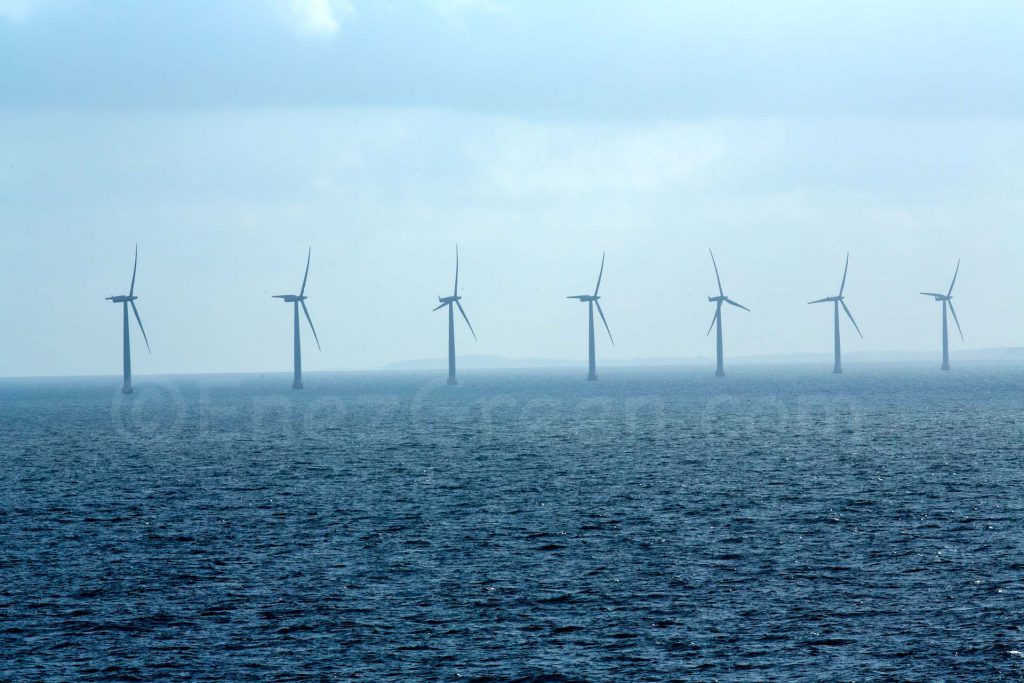Energy self-sufficiency and ecological footprint reduction
Samsø inhabitants were producing 45,000 tonnes of carbon dioxide per year compared to – 15,000 tons today and they export their electricity surplus from renewable energy sources to the rest of Denmark. They have managed to achieve a reduction of nearly 140% of their carbon footprint.
On arriving at Samsø, the green transformation signs begin immediately with the 10 offshore wind turbines aligned that extend the south of the island. Dozens of wind turbines rise above the fields on the island, while solar panels shine upon the houses’ roofs and you can see the smoke from boilers where are burned the straw from local farms or the wood from the island’s forest, which supply homes in hot water.
The bottom-up approach efficiency
The main challenge was to convince the islanders whom most of them were reluctant and divided by conflicts of interest. It is Søren Harmensen, a former professor of environmental studies who stands out for his contagious enthusiasm for renewable energy, who took up the challenge. Appointed project manager, he managed to force informal meetings and, based on conclusive economic arguments, he succeeded in convincing residents of the renewable energy benefits. It is relevant to note that Danes have developed a culture of dialogue and consultation which has been proven in the past. Like some Melanesian tribes for instance, no project can be designed without consultation among the relevant actors.
This revolution success is therefore based mostly on self-determination of Samsø people. None of these facilities has been imposed on the inhabitants by the State or funded by big energy companies. Each one belongs to an islander or a group of people. ‘The most important thing,’ reminds Jesper Kristensen Roug, in charge of innovative technologies promotion in Energy Academy, ‘is to have proven that for changing our energy habits, we must start with a bottom-up approach and not seek to impose technology to people. For example, we have been able to refuse Shell proposal who wanted to get involved in the project on condition to become the wind turbines owner.’
‘If no one on the island was against the presence of wind turbines, it is because almost all the islanders are involved in purchasing an installation process,’ reveals Jesper who moved on the island with his wife a few years ago since they shared the same motivation for green energies.
This is one of the keys of Samsø transformation success which nature is more social than technological. And Jesper to specify that only existing technologies and ready for use have been used for the island green transformation and that real changes have been realised in people’s standard reaction and that it took time to develop.
Political will is essential to reduce dependence on fossil fuels
One of Samsø Energy Academy’s roles is to share its knowledge and experience about renewable energy development since Samsø represents today one of the iconic islands proving that it is possible to become fossil fuel independant. Media from all over the world have visited Samsø to document the great story. Many solutions to environmental problems do exist, but a political will is needed in order to be able to encourage sobriety, reduce dependence on fossil fuels and move more quickly toward sustainable development.
With an average of nearly 750 W of installed wind power per capita, Denmark has largely proven that the technical brake could be lifted not only regarding the network variability but also the social barriers related to the wind turbines’ acceptance that are inevitable.
However, if Samsø efforts visibly bear fruit in the fight against CO2 emissions through a truly proactive policy, few initiatives are taken against chemical fertilizers still used by most farmers. Fortunately, organic agriculture is gradually developing on the island.


